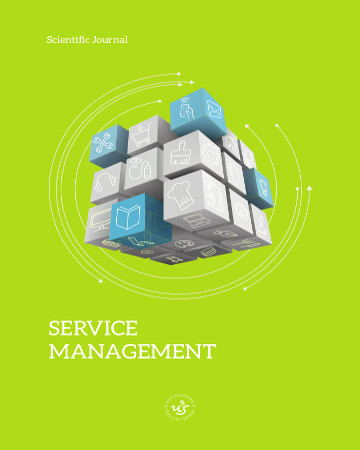
ISSN: 2450-8535
eISSN: 2451-2729
OAI
DOI: 10.18276/ejsm.2018.27/2-57


Issue archive /
Vol. 27/2, 3/2018
Financial literacy as a factor of cashless payments development. Results of survey
| Authors: |
Beata
Świecka
University of Szczecin, Faculty of Management and Economics of Services |
| Keywords: | cashless payment financial literacy payments cards mobile payment |
| Data publikacji całości: | 2018-12-31 |
| Page range: | 7 (467-473) |
| Klasyfikacja JEL: | D10 D14 D18 G20 I22 |
Abstract
The aim of the article is to analyze financial literacy in cashless payment. In the articles propose a hypothesis: financial literacy is one of the factor influence of cashless payments. This hypothesis is complemented by the statement that people with a higher financial knowledge and skills more often use cashless payments. In order to achieve the goal, it will describe the main factors of cashless payments. The article will also show the results of own research, which was carried out of the Foundation for the Development of Cashless Transactions using the research institute IPSOS. The own research shows the importance of financial literacy in the development of cashless transactions.
Download file
Article file
Bibliography
| 1. | Alsemgeest, L. (2015). Arguments for and against financial literacy education: Where to go from here? International Journal of Consumer Studies, 39 (2),155–161. |
| 2. | Becchetti, L., Caiazza, S., Coviello, D. (2013). Financial education and investment attitudes in high school: evidence from a randomized experiment. Applied Financial Economics, 23, 817–836. |
| 3. | Gavurova, B., Huculova, E., Kubak, M., Cepel, M. (2017). The state of student’ financial literacy in selected Slovak universities and its relationship with active pension savings. Interdisciplinary Approach to Economics and Sociology, 10 (3), 206–219. |
| 4. | Harasim, J., Świecka, B. (2018). Raport z badań – Rola bodźców w zmianach preferencji płatniczych Polaków. Warszawa: Fundacja Rozwoju Obrotu Bezgotówkowego, IPSOS. |
| 5. | Lusardi, A. (2010). Americans’ financial capability. Report prepared for the Financial Crisis Inquiry Commission. NBER Working Paper No. 17103. Dartmouth College:The National Bureau of Economic Research. |
| 6. | NBP (2018). NBP: liczba bankomatów systematycznie maleje. Polska Agencja Prasowa 3.05.2018. |
| 7. | PISA (2017). PISA 2015 Results. Students’ financial literacy. Vol. IV. Paris: OECD. |
| 8. | Programme for non-cash payments development in Poland for the years 2014–2020 (2015). Coalition for Non-Cash Payments and Micropayments. Warszawa. |
| 9. | Romiti, A., Rossi, M. (2014). Wealth decumulation, portfolio composition and financial literacy among European elderly. Working Paper No. 375, Carlo Alberto Notebooks, Collegio Carlo Alberto, Universita Degli Studi Di Torno, December, 37. |
| 10. | Uzonwanne, M., Ezenekwe, U. (2017). Financial illiteracy and cashless system in Nigeria. Journal of Economics and Sustainable Development, 8 (9), 123–139. |
| 11. | Xiao, J., O’Neill, B. (2016). Consumer financial education and financial capability. International Journal of Consumer Studies, 40 (6), 712–721. |